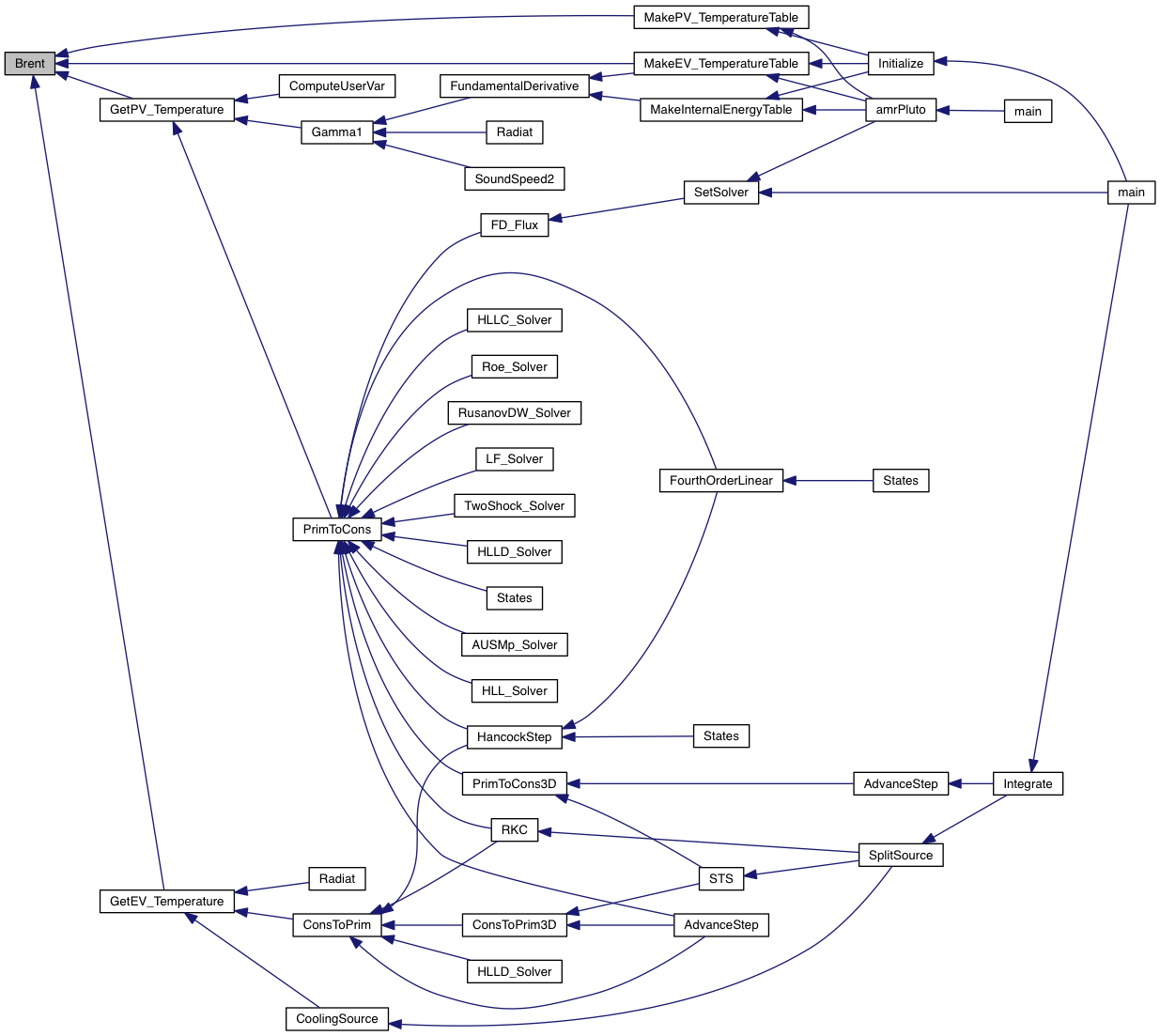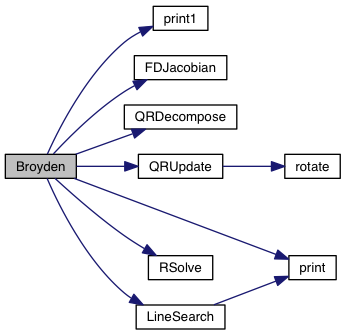342 int i, its,
j,
k, restrt, sing, skip;
343 double den, f, fold, stpmax, sum, temp, test;
344 static double *
c, *d, *fvcold, *g, *p, **qt, **r, *
s, *t, *w, *xold, *fguess;
349 print1 (
"! Broyden : Number of equations exceed the maximum limit\n");
367 (*vecfunc)(
n, x, fguess);
370 sum += fguess[
i] * fguess[
i];
378 if (fabs(fguess[i]) > test) test = fabs(fguess[i]);
379 if (test < 0.01*
TOLF) {
386 for (i=0;i<
n;i++) sum += x[i] * x[i];
387 stpmax =
STPMX*
MAX(sqrt(sum), (
double)n);
391 for(its = 1; its <=
MAXITS; its++){
397 print (
"! Broyden: singular Jacobian... Hard Luck !\n");
403 for(j=0;j<
n;j++) qt[i][j] = 0.0;
408 for(k=0; k < n-1; k++) {
410 for (j=0; j<
n; j++) {
413 sum += r[
i][
k]*qt[
i][
j];
417 qt[
i][
j] -= sum*r[
i][
k];
426 for (j=0;j<
i;j++) r[i][j] = 0.0;
431 for(i=0; i<
n; i++) s[i] = x[i] - xold[i];
434 for(j=i; j<
n; j++) sum += r[i][j] * s[j];
440 for(j=0; j<
n; j++) sum += qt[j][i] * t[j];
441 w[
i] = fguess[
i] - fvcold[
i] - sum;
442 if (fabs(w[i]) >=
EPS_FD_JAC*(fabs(fguess[i]) + fabs(fvcold[i]))) skip = 0;
450 for(j=0;j<
n;j++) sum += qt[i][j]*w[j];
455 for(i=0; i<
n;i++) den += s[i] * s[i];
456 for(i=0; i<
n;i++) s[i] /= den;
462 print (
"! Broyden: R is singular .. Hard Luck ! \n");
473 for(j=0; j<
n; j++) sum += qt[i][j] * fguess[j];
479 for(j=0; j<=
i; j++) sum += r[j][i] * g[j];
486 fvcold[
i] = fguess[
i];
492 for(j=0; j<
n; j++) sum += qt[i][j] * fguess[j];
501 LineSearch (n, xold, fold, g, p, x, fguess, &f, stpmax,
check, vecfunc);
506 if (fabs(fguess[i]) > test) test = fabs(fguess[i]);
515 print(
"! Broyden: Already tried reinitializing \n");
521 temp = fabs(g[i]) *
MAX(fabs(x[i]), 1.0)/den;
522 if (temp > test) test = temp;
524 if (test <
TOLMIN)
return;
531 temp = (fabs(x[i] - xold[i])) /
MAX(fabs(x[i]), 1.0);
532 if (temp > test) test = temp;
535 print(
"! Brodyen: All is Well !! \n");
540 print(
"! Brodyen: MAXITS exceeded in Broyden\n");
void QRDecompose(double **a, int n, double *c, double *d, int *sing)
void FDJacobian(int n, double x[], double fv[], double **df, void(*vecfunc)(int, double[], double[]))
void LineSearch(int n, double xold[], double fold, double g[], double p[], double x[], double mf[], double *f, double stpmax, int *check, void(*vecfunc)(int, double[], double[]))
void print1(const char *fmt,...)
void QRUpdate(double **r, double **qt, int n, double *u, double *v)
void RSolve(double **a, int n, double *d, double *b)
void print(const char *fmt,...)
#define ARRAY_1D(nx, type)
#define ARRAY_2D(nx, ny, type)
#define QUIT_PLUTO(e_code)

 known to lie between x1 and x2. Here the function must be in the form
known to lie between x1 and x2. Here the function must be in the form 




 known to lie between x1 and x2. Here the function must be in the form
known to lie between x1 and x2. Here the function must be in the form 